The Golden Globe Race of 2018 is currently resounding throughout the land, well, at least within the sailing community this event is something very special we are all looking forward to: The re-make of the 1968/69-edition of the Golden Globe Race has been started on July 1st, four days ago. One of the 18 sailors who are participating and competing in this 30.000 miles solo circumnavigation is the Hungarian born American sailor Istvan Kopar, whom I had the honour to speak to some days prior to his departure aboard his 35 feet classic GRP yacht PUFFIN.
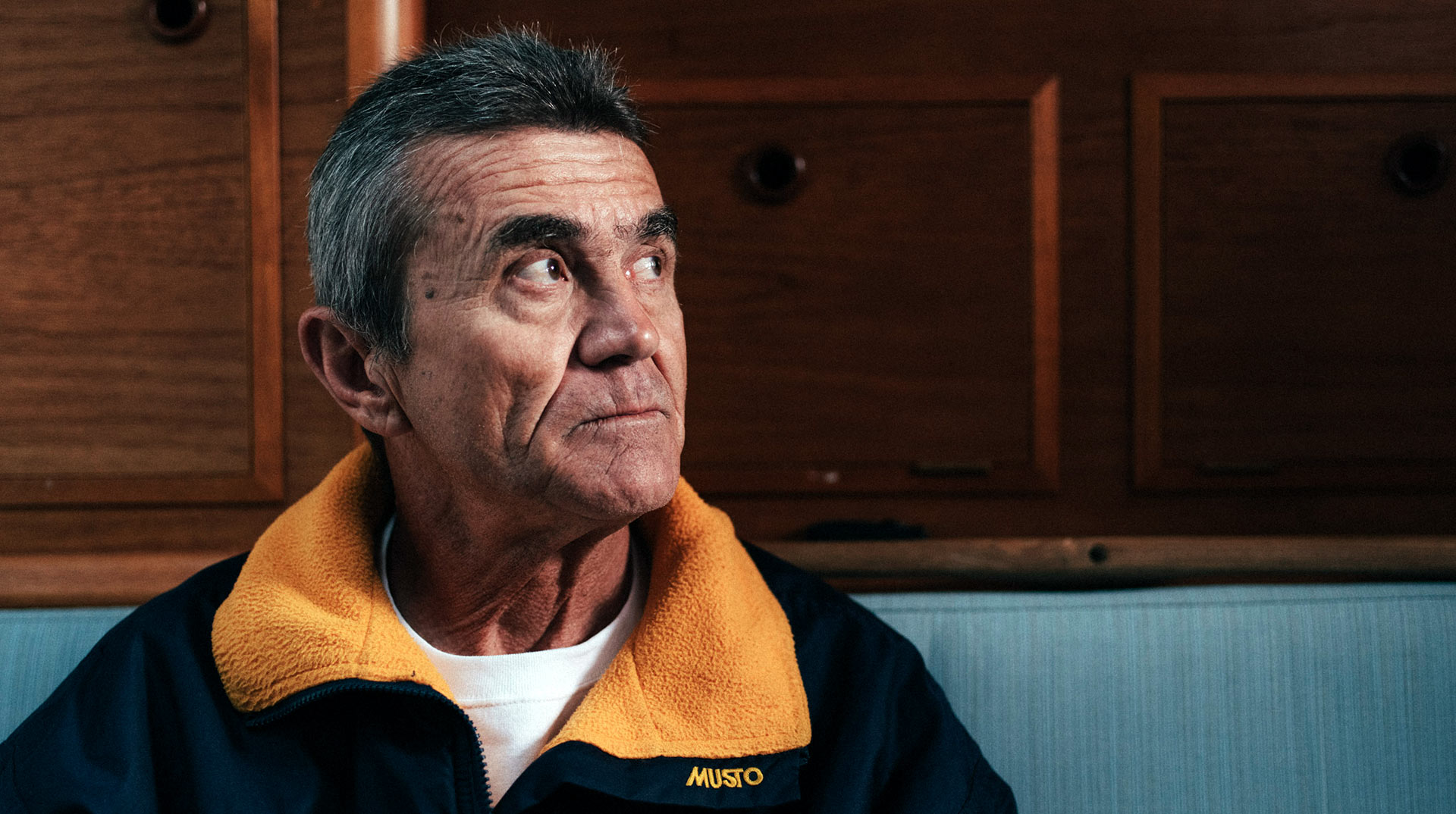
Istvan is now in his mid-sixties but looks awesome well, a bit stressed (which of course is no wonder concerning the fact that the preparation for this race is a load of stuff to be looked after). His determined, energetic but kind attitude conveys competence, self-composure and the tempers of a man who has already seen what awaits him, who really knows what this venture is all about. Kopar is sailing since he was a small boy back in Hungary. The new Golden Globe Race of 2018 is, what he says, the pinnacle of his sailing life so far.
A lifetime dedicated to sailing
Lars Reisberg | NO FRILLS SAILING.com “Istvan, you are an old salt when it comes to sailing. But tell me, how did it all begin in the first place?”
Istvan Kopar: “Well, I don´t really know why, but I can tell you that I love boats, the sea and sailing since I can think back to my earliest memories. We used to live near the Lake Balaton in Hungary. I was 4 or 5 years old when I did have my first sailboat. It was made in Germany and I remember that I prepared myself very eagerly, went out to my first circumnavigation of the Lake Balaton – which is a big lake – and I really did it. I´ve had a logbook on a roll of toilet paper. (laughs) I really was striving the whole life of mine to be out on the oceans and on ships. I did everything I could to be hired by Hungary´s one and only shipping company and started a professional career as a merchant seafarer. For 13 years I worked in the business and did climb my way up. Sailing alone around the world was always, just from the beginning, my aim. It was always part of the plan.”
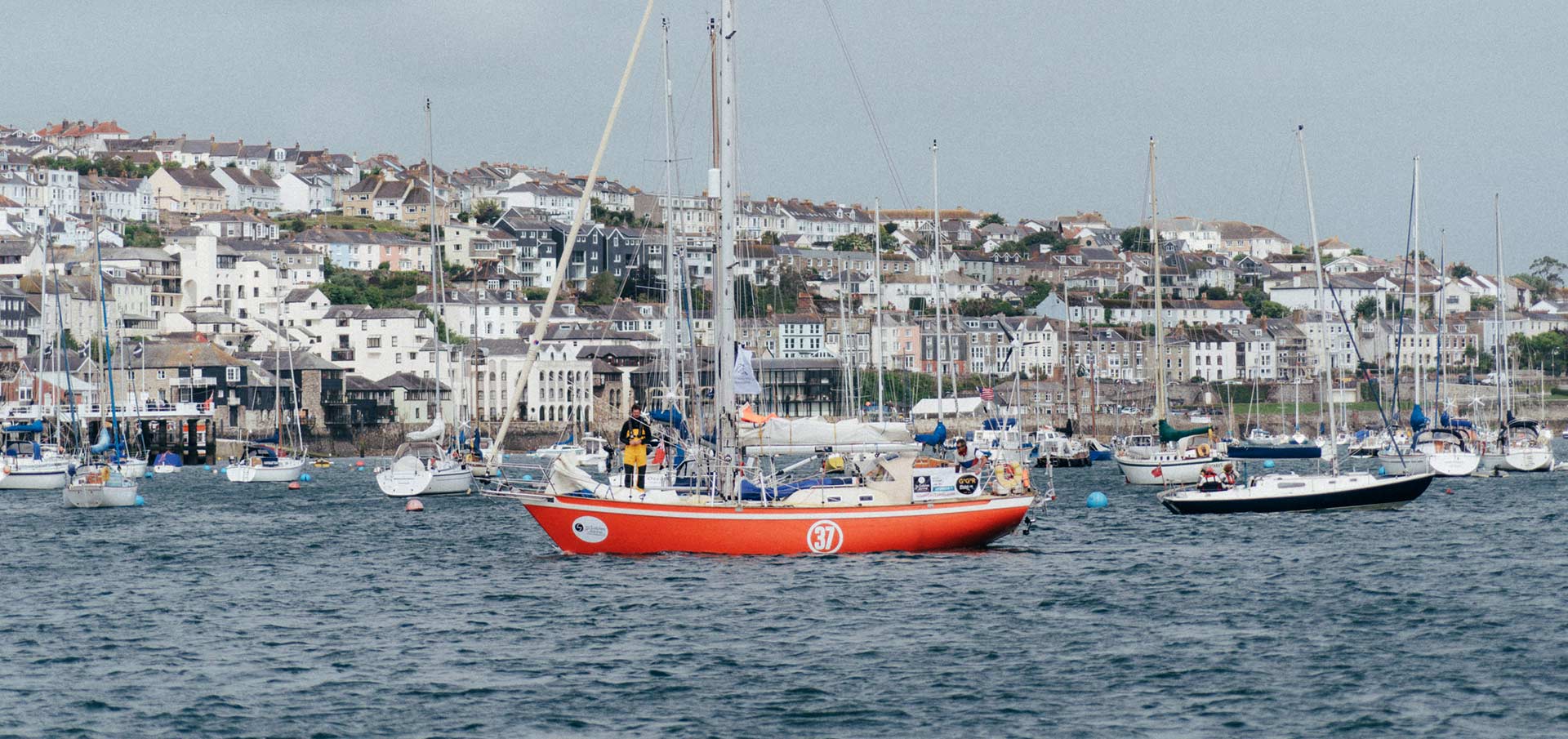
NFS.com: “You already have been sailing around the world alone, haven´t you?”
Istvan Kopar: “Yes, I did. It was back in 1991, right after the fall of the Iron Curtain. I already have had some 50 years experience in the maritime business at this point: I had owned a sailing school on Lake Balaton and a charter business at the lake, had worked as a radio operator on merchant ships, I was a repo-man in the yachting business taking back boats and so on. I was pretty much well suited and best prepared to do it and I did it … the Chichester way. That´s a one-stop circumnavigation. It was a big highlight and a great adventure – but not a complete circumnavigation in the end.”
NFS.com: “Which is something you want to do now in participating in the 2018 edition of the Golden Globe Race. Why the Golden Globe Race, though?”
Istvan Kopar: “You see, the last 3 years I have been working hard and striving for being a participant here. I completely stripped the boat and basically started from scratch. It´s a dream coming true. It feels that all of my life I have been living for this one project. Why the Golden Globe Race? Well, I think that the sailing community got pretty much divided. There is the high-tech carbon-foiling speedy-shiny Formula 1 sailing world where everything is about maximum speed no matter what. It´s a fascinating world of course, but a world an ordinary man like me or you or most of the people who love sailing will never be a part of. We can just sit there and watch it. There is an ever increasing gap between this world and normal sailors. The Golden Globe Race is a huge event but an event that goes back to what sailing once used to be – a self-sufficient skipper on a boat he alone controls by himself. There´s no support from the land. It´s pretty much going back to real sailing. No weather routing software, no satellite-steering no technical overload. Just the sailor and his abilities. His decisions. His own capabilities. On a normal boat.”
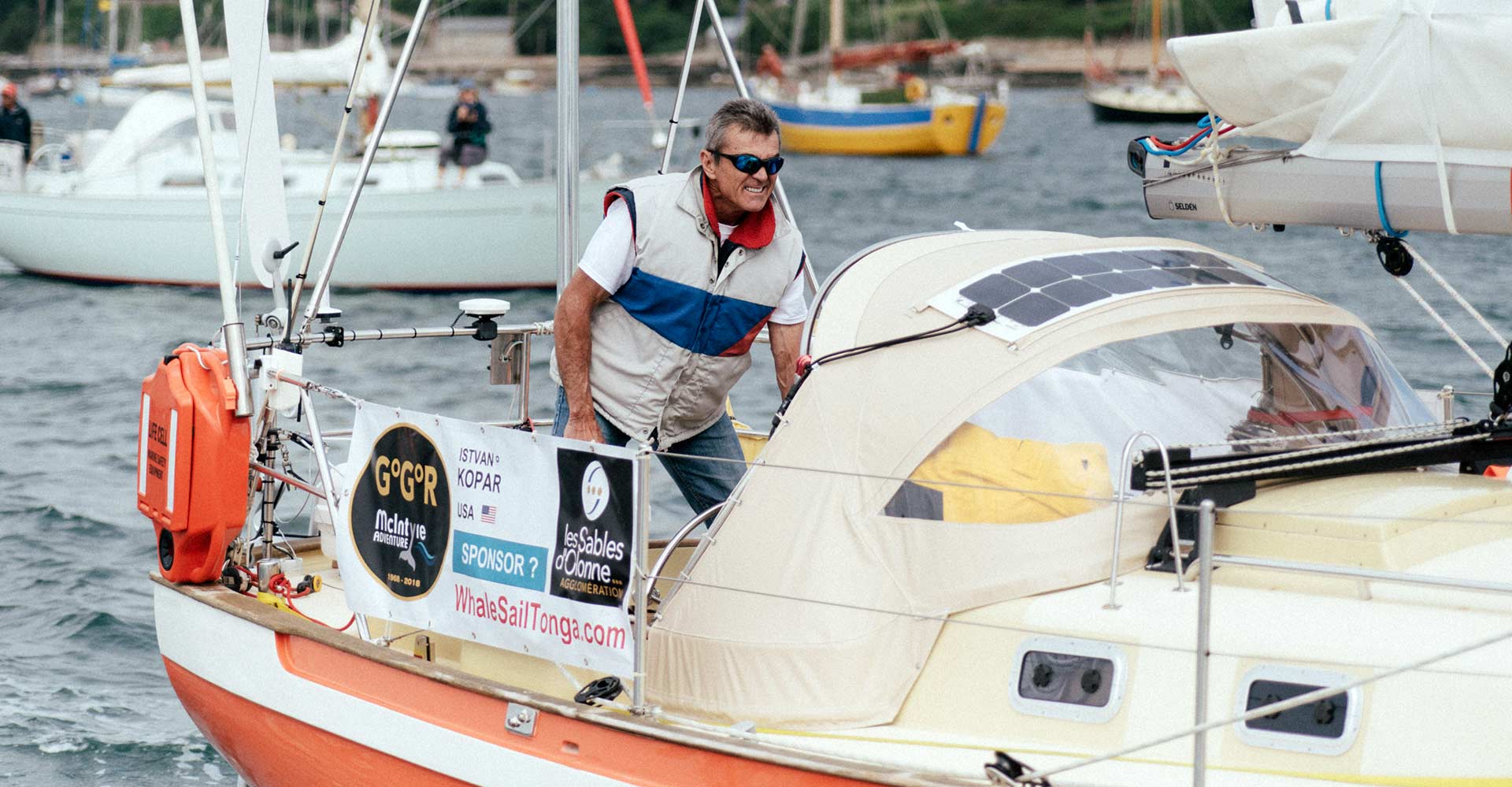
NFS.com: “Do you have any role models in this matter?”
Istvan Kopar: “Yes of course! As the saying goes, back then the ships were made of wood and the sailors were made of iron. And that may be true – with due respect for the achievements of today´s sailing heroes – but my number one sailor is and always has been Joshua Slocum, whom I admire dearly. I have also the greatest admiration for Ernest Shackleton.”
NFS.com: “So, your boat is not made of wood but she´s a GRP classic …”
Istvan Kopar: “Oh yes, the PUFFIN is a 35 feet Tradewind yacht built back in 1986. I´ve completely stripped the boat and re-built her to fit the demands of such a venture and of course according to the strict safety regulations of the Golden Globe Race. She is fitted for the harsh environment of the Southern Oceans but, although being a modern boat made with modern materials, I won´t be so much spoiled by modern technical stuff like GPS, internet, weather routing software and so forth. I think, the more technical comfort we gain, the more we get spoiled and will finally lose certain abilities. Which can be in the end prevent us from making the right decisions. The Golden Globe Race kind of re-connects us to the good old way of real sailing and that is what I like so much. We are all ordinary men who are participating – and not multi-million-dollar high tech corporations competing about who can send the biggest computer around the world the fastest way possible.”
The Golden Globe Race – from a navigational standpoint
NFS.com: “One aspect of the Golden Globe Race is self-sufficiency. That means that you are not allowed to utilize modern navigational instruments like GPS-satellite aided navigation. That´s basically going back to the sextant and celestial navigation …”
Istvan Kopar: “Which is great! You see, when I did my first solo circumnavigation in 1991 I did have one of the first GPS-devices. It was a big, expensive thing, no comparison to modern day plotters. Anyway, as it happened, it broke down early in the voyage and I did have to rely on celestial navigation. It was refreshing and exciting to do it the way hundreds of generations of seafarers did. And it really works! It works very well, I can assure you. When I was sailing PUFFIN over to the UK some months ago to bring her to Les Sables for the start, I was getting sextant fixes for training day by day and compared them with GPS-positions – and they came closer and closer all the time. I really like this kind of navigation.”
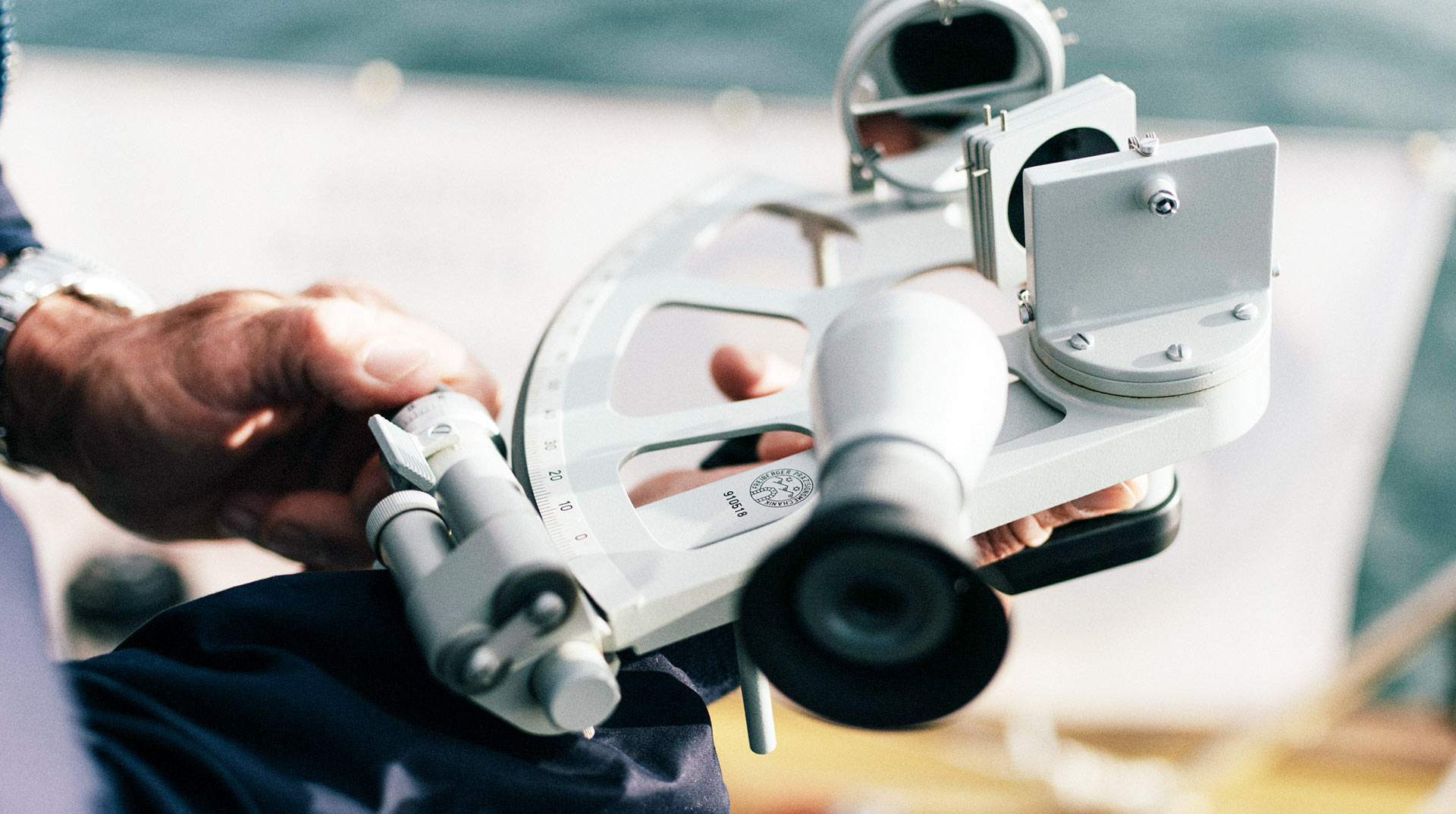
NFS.com: “But it´s not just the sextant, you also need to have a very accurate ship´s clock don´t you?”
Istvan Kopar: “Yes, of course. That is the main thing in celestial navigation. People think it´s the sextant but it´s not. It´s the ship´s chronometer. And therefore I am very, very happy and proud that German company Wempe is part of my sponsor network. They really pushed my whole efforts in providing me with a marine chronometer that is exceeding my highest expectations!”
NFS.com: “Because it´s the accuracy of the time stamp during a celestial fix that is determining how close the finding is to your actual real position …”
Istvan Kopar: “… exactly! I am so grateful that Wempe stepped in. Thy do provide me with this big chronometer. It´s heavy duty quality. Everything about this ship´s clock is fascinating. The whole quality, the thickness and weight of the material. You instantly feel that this thing is really made to fit the harsh environment of the seas, to eventually last for decades and do its job. It´s no plastic, no leightweight stuff. This is real steel, so to say. It´s real German engineering and quality-wise big time! It even looks so beautiful, it´s a work of art.”
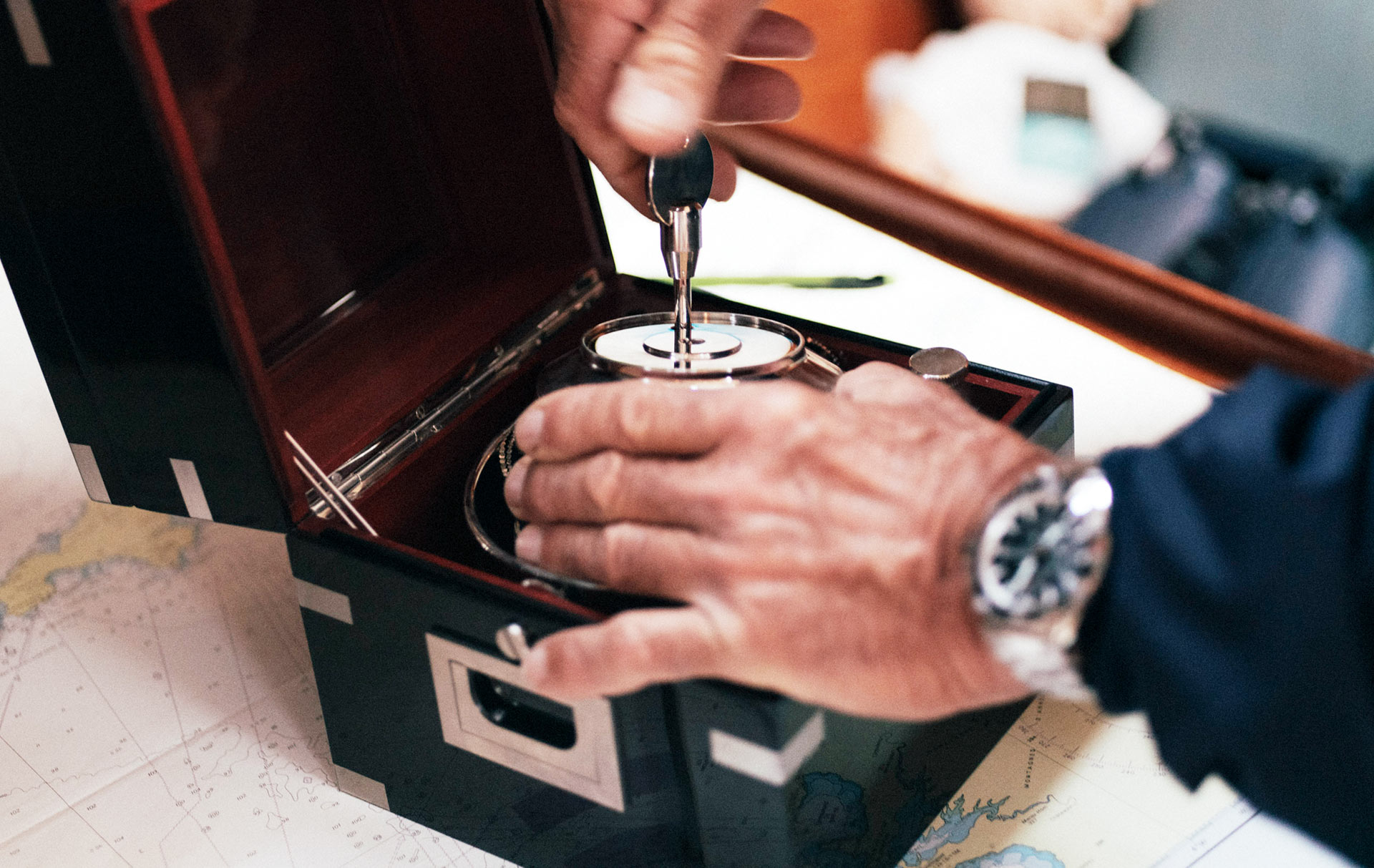
NFS.com: “So it´s a chronometer and a sextant, basically, which will determine your navigation?”
Istvan Kopar: “Yes. Best of it – and this was really blowing my mind – was that Wempe also decided to hand me over a wrist-held chronometer. This is such a generosity and it will boost my navigational efforts. Because now I can take a fix with the sextant in one hand and a chronometer on the other. It´s time saving and I do not necessarily dash down after taking a fix to the main chronometer to get the time stamp. I am thankful for the engagement of Wempe. Even when I met the sponsors in the UK for leaving towards France for the start, the Wempe guys didn´t just came for a shake-hand meeting and taking some press-pictures but they lent a hand and helped to prepare the boat, loading provisions, putting up batches and stuff. They are great guys and they are one of the very few sponsors who don´t just provide me with goods or agree on discounts but who also signed a real cheque. Wempe was a boost to my project and I owe them a big “thank you!” for sure!”
NFS.com: “And you take special care of it, won´t you?”
Istvan Kopar: “Yes of course! As my dear life and the safety of my journey depends on the proper functioning of these instruments, it is absolutely customary for me to look after them, especially for the big chronometer. You see, this thing is a heavy duty instrument, you can feel the quality of the making in its weight, but of course, especially in the rocky Roaring Fourties and in storms there will be lots of shaking. So I asked my sailmaker to make a special, waterproof cover for the chronometer to make sure that absolutely nothing can happen to it. Upon returning, we have a deal with Wempe that we will auction off the chronometer for charity – so, it´s an honour to keep is as beautiful and ready as it is now.”
Adventure of a lifetime
NFS.com: “What is the most challenging part of the Golden Globe Race from your point of view?”
Istvan Kopar: “I think it is foremost and first the length and the duration of the race itself. Did you know that the Golden Globe Race – apart from the original regatta in 1968 – is the longest sporting event in human history? Well, the fastest multihull did this journey in 42 days, if I remember correctly, but we will be underway for nine months! So this I think will pose the biggest obstacle.”
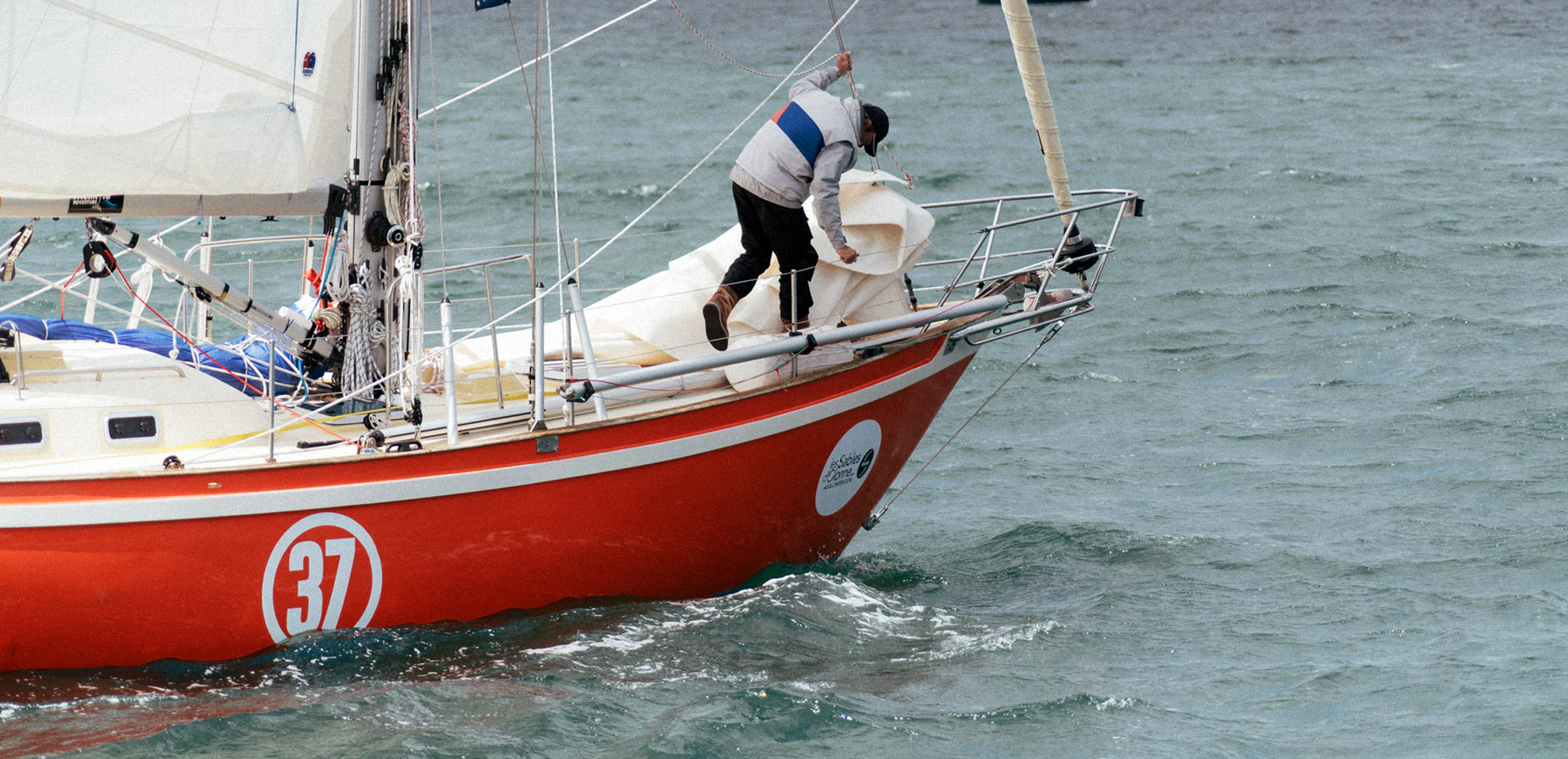
NFS.com: “How will you tackle it?”
Istvan Kopar: “You see, I basically know what it is about to sail around the world because I already did it. That´s why I know that maintaining your own mental health during this race is of utmost importance. Not to take any risks, play safe, keep your reserves and never go too far – that´s in my opinion the key to a successful completion of this venture. It´s a complex process, of course, but keeping up personal spirits is the thing, I would say.”
NFS.com: “Your voyage will not just take you around the globe but also bring you to the most prestigious places of sailing, like the Horn, Cape Leeuwin and so forth: What are you most looking forward to during the race?”
Istvan Kopar: “That´s quite easy to say: To the finish line!”
NFS.com: “That answer comes as a surprise …?”
Istvan Kopar: “Well, you see, the Golden Globe Race and the idea of solo sailing around the world is with me for my whole life. It has been a very, very long way for and this way was covered with many spikes. Of course I look forward to sailing, no question, but in any way, finishing is the thing I am focused on.”
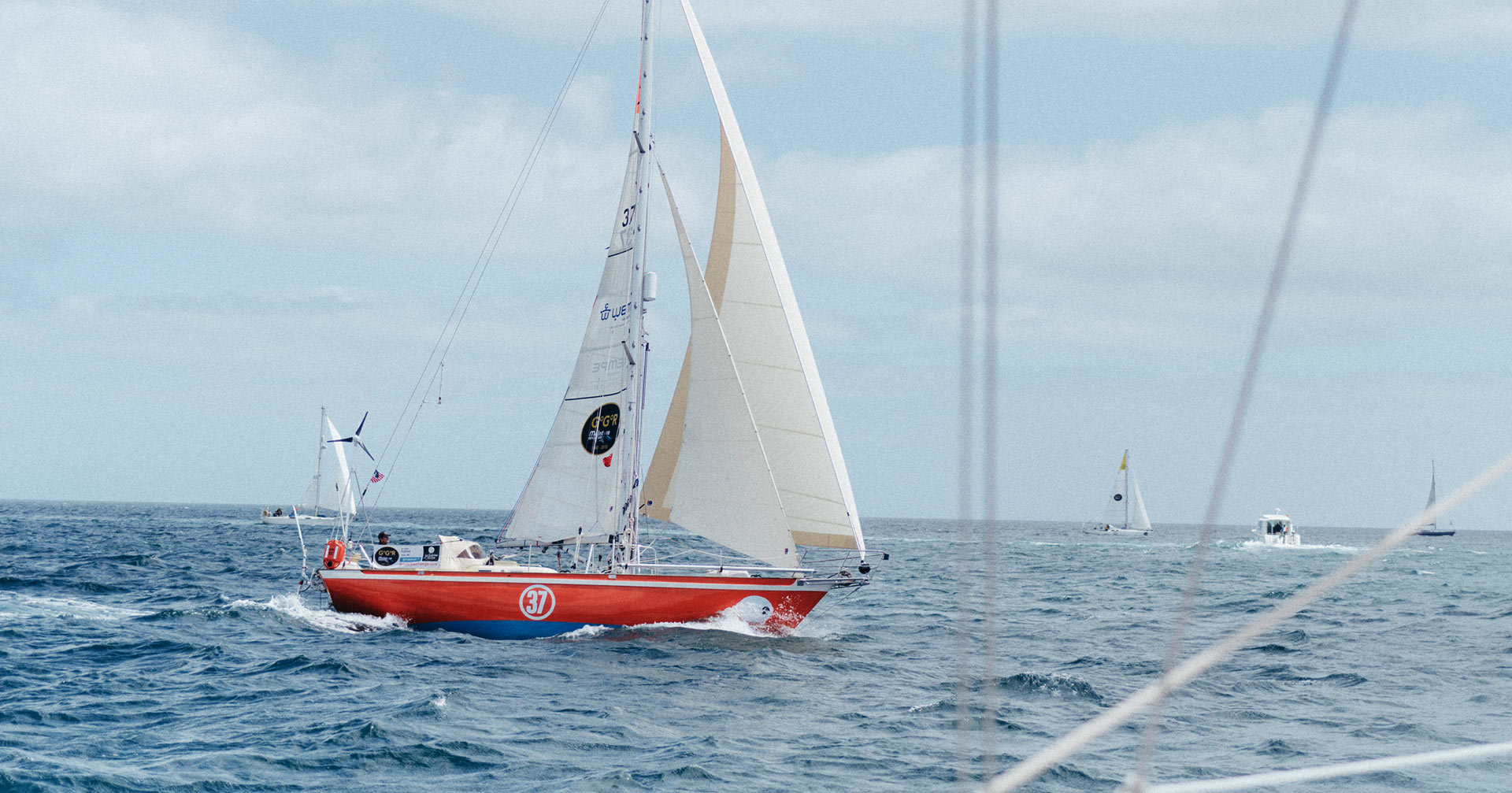
NFS.com: “How will you manage the race itself?”
Istvan Kopar: “First of all I try to make a good start in the first place. Getting back my sealegs and have the boat underway and running smoothly will be the task of the first days. Then the daily routine will set in like social obligations, navigation, ship´s log and sails trim. I will try to race downwind as fast as I can to the Canary Islands to finally catch the trade winds. Then I hope to be lucky and quick through the doldrums. Reset everything to zero, catch the south-east trades after the Equator and dash down to …”
NFS.com: “… down to the Southern Ocean!”
Istvan Kopar: “Yes. Down to the Roaring Fourties as fast as I can!”
The Golden Globe Race in the Roaring Fourties
NFS.com: “What can you tell me about sailing in the Roaring Fourties?”
Istvan Kopar: “I will be hard, I know that. But at the same time I know that we are a little bit better prepared than Robin Knox-Johnston, Moitessier and the others of 1968. The boats have a different set-up. We are – although considered “classic” GRP-yachts and not very modern by today´s standards – we are indeed faster than SUHAILI and the others so I expect us to reach the South Atlantic a bit earlier in the season than they did.”
NFS.com: “That means a tough crossing!”
Istvan Kopar: “Oh yes, that´s what I would say. But on the other hand I think that, if everything works out fine, we will also be earlier through the South Indian Ocean and the devilish Tasmanian Sea which means that we will reach the Southern Pacific Ocean and finally Cape Horn sometime around Christmas this Winter: Which is the best season for a rounding of the Horn!”
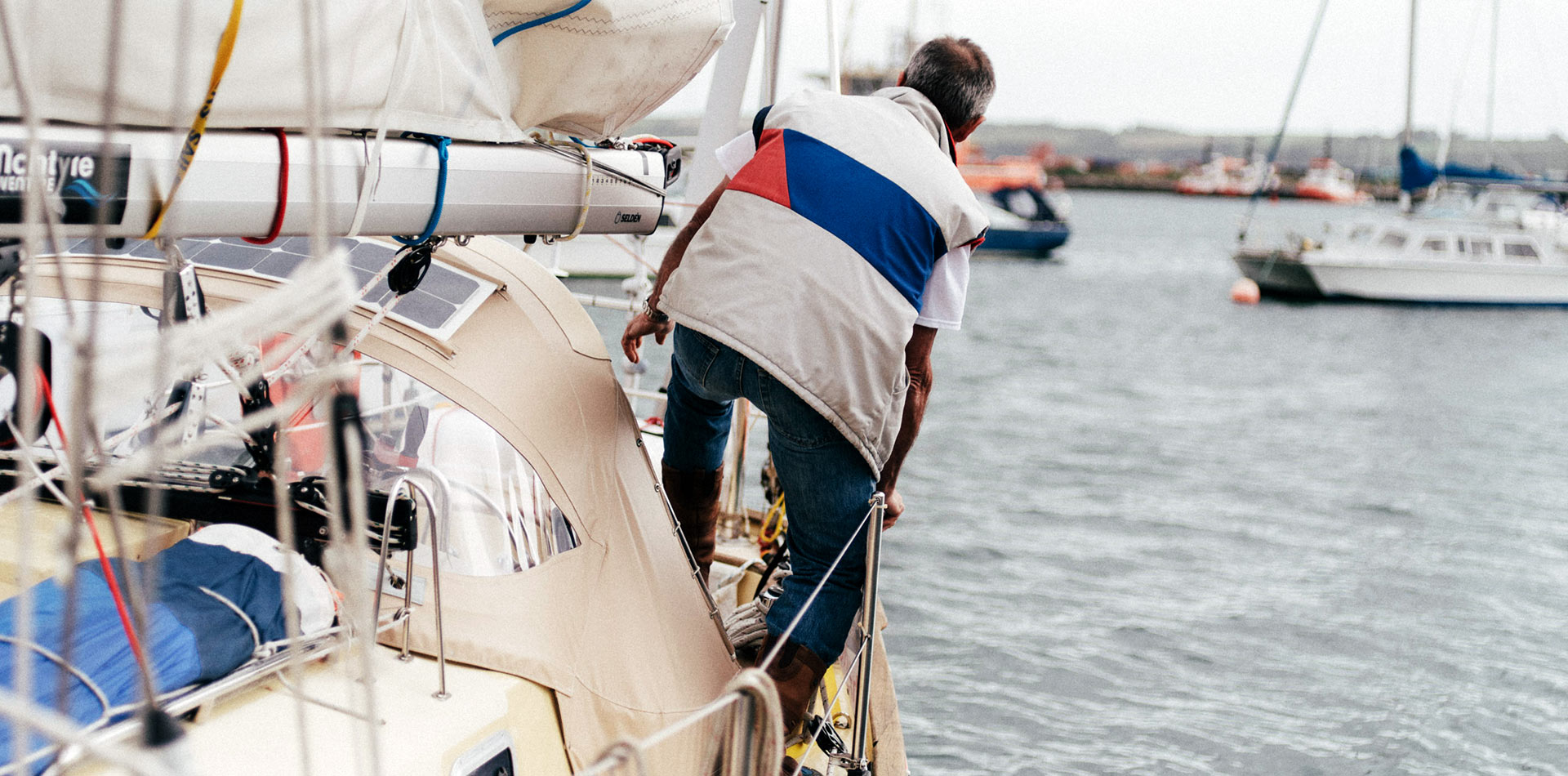
NFS.com: “From there it´s due North and back home again …”
Istvan Kopar: “Technically yes, but the race isn´t over at all. It can be – any maybe will be – very, very frustrating to go up North again and be within the Variables. Many get stuck directly there after rounding of the Horn. Just simply stuck. I hope that I won´t be dragged in this miserable situation and the boat will make it fast up to and over the Equator again.”
NFS.com: “Then the last thing awaits you.”
Istvan Kopar: “Yes, and it will be here, I guess, where the race will be determined and can finally change everything: It´s a long, long way up from the Canary Islands again beating all the way against the prevailing winds and then entering the notorious Gulf of Biscay, which can be very hard sailing. Every section of the race is tough in its own sense.
On provisions, eating and resting during Golden Globe Race
NFS.com: “Istvan, I remember reading Robin Know-Johnston´s book where one picture was particularly interesting: His provisions on SUHAILI. What is the food and drink situation on your boat, PUFFIN, like and where is the difference between you and Sir Robin?”
Istvan Kopar: “I remember this picture myself. It was nearly the same situation with PUFFIN when I leaded her for the voyage some weeks ago back in the United States. Basically, I do have also canned foods, modern canned foods, with all sorts of flavours and fitting – I would say – every possible craving I might have underway. Then I of course do have some Hungarian specialties with me to keep spirits high and granting me a little treat. The I do have a U.S. sponsor that makes a very unique very fat, high energy long preserved stuff that looks like a hot dog in a plastic bag. I have lots of it aboard.”
NFS.com: “No dry-frozen stuff?”
Istvan Kopar: “Oh yes, I do have a 3 months supply of frozen dried food in all sorts of flavours. And lots of canned fish, not the least, lots of salmon and sardines. For the final tuning of the dishes spices and stuff. I know that cooking aboard is the highlight of the day and I want to have it rich and full of flavours. Maybe another difference from the high-tech fast-foiling sailors?”
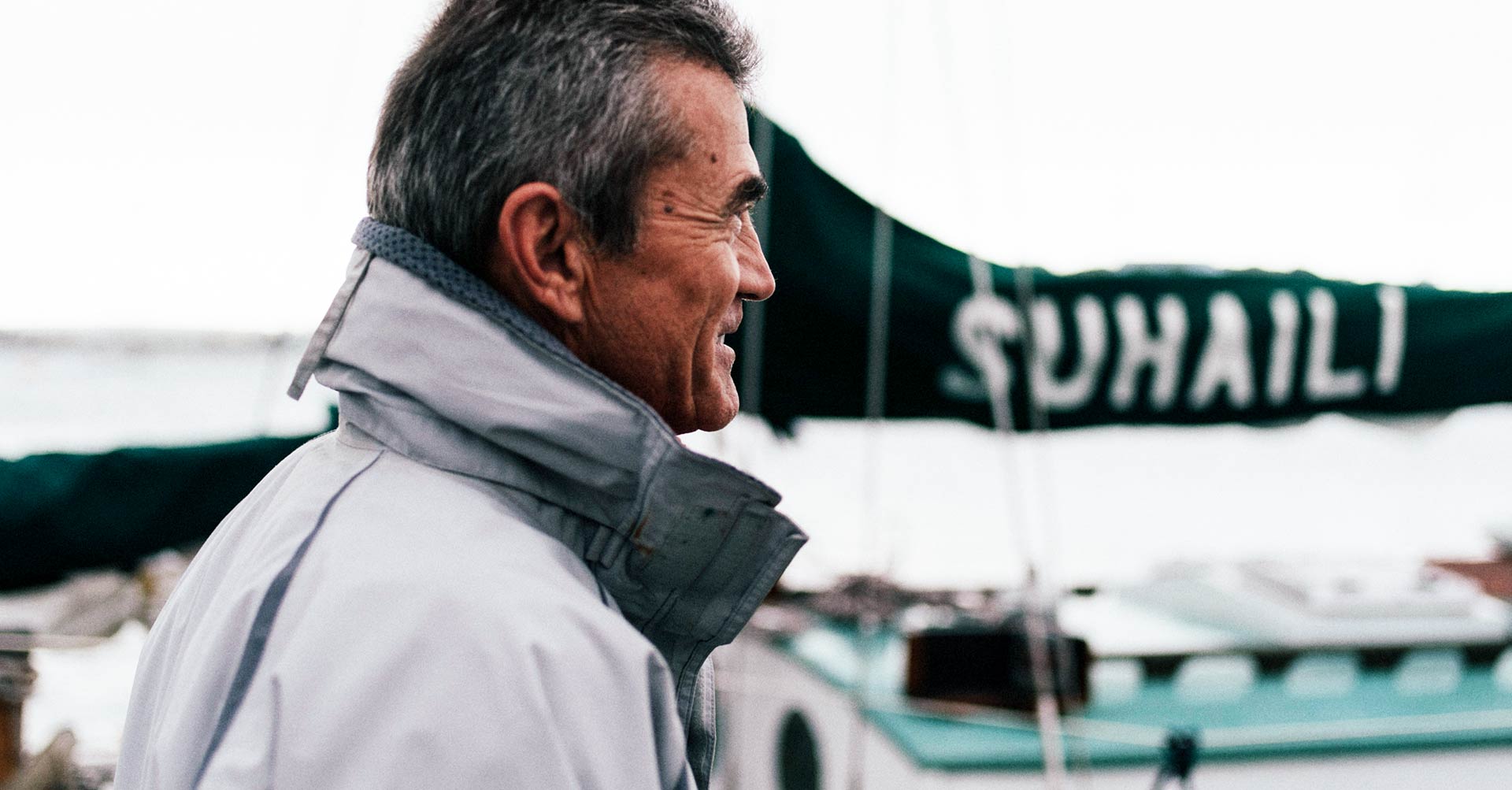
NFS.com: “How do you manage your resting time? Do you have something like a sleep management program?”
Istvan Kopar: “No, we do it the traditional way. I will sleep when I have to. Of course, when we sail in the shipping lanes, we cannot sleep very long. But that will change once leaving the trade routes. On the other hands, all boats are required to have a sort of Radar-detection machine. It will make a crazy staccato if a Radar-beam hits the receiver. It´s a safety measure and I respect it, but I guess it´s annoying to be warned of an object that will possibly be 20 to 40 miles away. Plenty of time. Anyway, in traffic lanes I will set multiple alarm clocks and do 20 to 30 minute catnips, take a lookout, and do the next 20 minute sleeping loop. In free searoom away from the shipping lanes I am sure we will enjoy the luxury of a full, few hours real sleep for sure! But no – no professional sleep management for me, no tricks, no pills, no chemicals and no Red Bull.” (laughs loud)
Istvan, together with 18 other contenders, left the port of Les Sables d´Olonne on July 1st and is today, July 5th according to the Golden Globe Race Live Tracker Istvan is positioned 16th making slow progress (like the rest of the fleet) in a clam zone just off the coast of Portugal. One contender already abandoned the race. Fair winds and be safe out there, Istvan!
Pictures with kind permission of Josh Exell
More on the Golden Globe race in these articles:
Interview with Sir Robin Knox-Johnston on the Golden Globe Race
The greatest sailing tragedy of all times? Donald Crowhurst´s story
Bernard Moitessier “Long Route” book review
